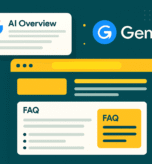SEO in 2025 is not just about writing content manually for every keyword. As websites grow and search competition increases, many marketers are turning to programmatic SEO to scale faster. But what is programmatic SEO exactly?
In simple words, programmatic SEO means using templates and data to automatically create many SEO-optimized pages. It’s a smart way to scale SEO for large websites, niche blogs, local services, and more without needing to write every page from scratch.
This blog will explain how programmatic SEO works, why it’s useful, and how beginners can start using it to save time and grow search traffic.
What Is Programmatic SEO?
Programmatic SEO is a smart way to create many web pages using a mix of data and templates. Instead of writing every page manually, you build a structure once and let the data fill in the rest. This helps websites grow fast and rank for many different search terms, especially long-tail keywords.
How It Works
Imagine you want to create pages for “Best Coffee Shops in Mumbai” for 100 cities. Instead of writing 100 pages by hand, you build one template and use a data sheet with city names and details. The system then creates 100 SEO-friendly pages automatically.
How It’s Different from Traditional SEO
- Traditional SEO focuses on writing unique content for one keyword or page at a time.
- Programmatic SEO lets you create hundreds or thousands of pages from a single format, often using a spreadsheet or database.
It’s not meant to replace quality content, but to scale SEO for pages that follow a pattern — like local service areas, product listings, or tool comparisons.
Examples of Programmatic SEO in Real Life
- Travel sites like Booking.com showing “Hotels in [City]”
- Food delivery apps with pages like “Pizza near [Location]”
- SaaS tools creating landing pages for each use case or tool type
- Niche websites showing “Best tools for [industry]” or “How to learn [skill]”
How Programmatic SEO Works
Programmatic SEO works by using data and templates to create many SEO-friendly pages at once. Instead of writing each page by hand, you design a reusable layout and fill it with dynamic information from a spreadsheet or database.
This is a smart way to scale SEO efforts without spending hours on every page.
Core Elements You Should Know:
- Template-Based Pages
You create a single page template that can be used for multiple pages. For example, a page format for “Best Digital Tools for [Industry]” can be reused 100 times by changing just the industry name and data. - Keyword Data
You research a keyword pattern like “Best [Product] for [Audience]” and use tools like Ahrefs or Semrush to build a list of long-tail keywords. These help your pages rank for specific, less competitive search terms. - Dynamic Content
Each page pulls data from a source like Google Sheets, Airtable, or a database. You can show different titles, images, facts, or reviews on every page while keeping the design the same.
- Internal Linking
Programmatic SEO works best when your pages are well-connected. Add smart internal links to help users and search engines move easily through related pages.
Popular Tools That Help With Programmatic SEO
- Airtable or Google Sheets – For storing your keywords and content data
- Webflow CMS – To create and publish dynamic pages without coding
- Notion – To organize your content ideas and track keyword usage
- Sheet2Site or Softr – To turn your Google Sheets into websites
- Low-code tools like Zapier or Make – To automate content creation and publishing
- Python or no-code scripts – For those who want more control and automation
Benefits of Programmatic SEO
1. Faster Content Creation
Instead of writing every page manually, you create a template and fill it with data. This helps you build 100s of pages in less time.
2. Rank for Long-Tail Keywords
Long-tail keywords are longer, more specific search phrases. These are easier to rank for and bring in high-intent users. It helps you target hundreds of these keywords without extra writing.
3. Easy to Scale Without a Big Team
You don’t need a large content team. A solo marketer or small business owner can create lots of useful pages using tools like Airtable, Google Sheets, or Webflow CMS.
4. Works Great for Small and Niche Businesses
Programmatic SEO helps smaller websites compete with bigger brands by focusing on niche topics and less competitive keywords. Even if you’re new to SEO, this strategy gives you a fair chance to rank and grow.
Programmatic SEO vs. Traditional SEO
| Feature | Traditional SEO | Programmatic SEO |
| Main Approach | Manual content creation, one page at a time | Uses templates + data to create many pages automatically |
| Content Type | Unique, in-depth content | Repeated layout with changing data |
| Best For | Trust-building, detailed blog posts, service pages | Local pages, product listings, tools, comparisons |
| Keyword Focus | Short, high-traffic keywords | Long-tail and low-competition keywords |
| Scalability | Slower to scale | Built for fast, large-scale content creation |
| When to Use | For high-quality brand storytelling | For covering many similar topics or locations |
| Tools Used | CMS, SEO plugins, manual optimization | Airtable, Webflow CMS, Google Sheets, automation tools |
When to Use vs. Avoid Programmatic SEO
| Use Programmatic SEO If | Avoid Programmatic SEO If |
| You want to cover hundreds of similar keywords or topics | You don’t have clean or structured data |
| You’re creating pages for multiple locations, products, or use cases | Your content needs to be deep, custom, or story-driven |
| You want to grow quickly with fewer resources | You want to build brand trust through long-form, unique content |
How to Get Started with Programmatic SEO
You don’t need to be a developer to use programmatic SEO. With the right tools and plan, anyone can start building pages at scale. Here’s a simple step-by-step guide for beginners:
Step 1: Find a Keyword Pattern
Look for a repeating keyword format that many people search for.
Example: “Best tools for [Industry]” or “Top things to do in [City]”
Use keyword tools like Semrush or Ahrefs to find long-tail keywords that match your niche.
Step 2: Create a Data Source
Make a spreadsheet with the changing parts of your content — such as city names, product names, or services.
You can use Google Sheets, Airtable, or even Notion to store your data.
Step 3: Build a Page Template
Design a basic page layout in a CMS (like WordPress, Webflow, or Webflow CMS).
Add placeholders where the data will go, such as [City], [Tool Name], or [Price].
Step 4: Connect and Automate
Use tools like Zapier, Make.com, or no-code integrations to automatically pull the data into your templates.
This will generate many SEO-friendly pages at once.
Step 5: Optimize Metadata and Links
Make sure each page has unique:
- Meta title (e.g., “Best Tools for Plumbers – 2025 Guide”)
- Meta description
- Internal links to related pages
This helps Google crawl your site better and improve ranking.
Common Mistakes to Avoid in Programmatic SEO
While programmatic SEO is a powerful way to grow traffic, it only works well if done carefully. Many beginners make simple mistakes that can hurt their rankings or create poor user experience. Here’s what to avoid:
1. Publishing Low-Quality or Duplicate Content
Just because you can create 1,000 pages doesn’t mean you should. If all your pages look the same or offer no real value, Google may ignore them or worse, penalize your site.
Solution: Make sure each page has useful, unique content pulled from reliable data.
2. Ignoring Search Intent
If your pages don’t match what users are really looking for, they won’t perform well even if they rank.
Solution: Focus on search intent. Use keywords that solve real problems or answer real questions for users.
3. Not Testing or Tracking Performance
Launching hundreds of pages without checking how they perform is a missed opportunity.
Solution: Use tools like Google Search Console, Ahrefs, or Semrush to track rankings, clicks, and impressions. Update or remove underperforming pages.
4. Skipping Technical SEO Basics
Even automated pages need strong SEO foundations. Pages must load fast, be mobile-friendly, and have proper tags.
Solution: Check for broken links, add meta tags, and optimize images. Use site audit tools to stay on track.
Tools That Help with Programmatic SEO
Using the right tools can make programmatic SEO easier, faster, and more effective. Whether you’re just starting or want to scale your content, these tools help automate the process without needing advanced coding skills.
1. Sheet2Site
This tool turns your Google Sheets into fully designed web pages. It’s perfect if you want to create many pages using structured data without writing code.
- Best for: Quick website creation from spreadsheets
- Use case: Listing local services, tools, products, or FAQs
2. Webflow CMS
Webflow CMS allows you to design and manage dynamic pages using templates. It’s a great visual platform to build SEO-optimized content that changes with your data.
- Best for: Creating stylish, scalable websites
- Use case: Blogs, landing pages, or city-based SEO content
3. Airtable
Airtable is like a smarter spreadsheet. It helps organize your keywords, content blocks, and data at one place.
- Best for: Storing large datasets for use in templates
- Use case: Managing keyword ideas, product info, or topic clusters
4. Semrush / Ahrefs
These tools help you find keyword patterns and long-tail SEO opportunities. They show you what people search for and help identify trends for scale.
- Best for: Keyword research and SEO analysis
- Use case: Finding repeatable search terms like “Best [Tool] for [Audience]”
5. Zapier / Make (Integromat)
These are low-code automation tools that connect your content, data, and publishing platforms. They save time by automating tasks like uploading content or generating pages.
- Best for: Automating repetitive work
- Use case: Sending data from Airtable to Webflow, or Google Sheets to WordPress
Conclusion
Programmatic SEO is a smart and scalable way to grow your website traffic—especially in 2025, when search is more competitive and personalized than ever. By using templates and structured data, you can create many helpful, keyword-rich pages that meet user intent without writing them one by one.
If you’re just getting started, begin with a small test project. Use tools like Google Sheets, Webflow CMS, or Airtable. Focus on solving real problems, not just filling pages.
Done right, programmatic SEO can help your brand rank higher, reach more people, and grow faster with less manual work.




